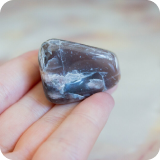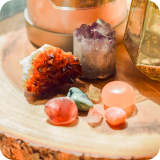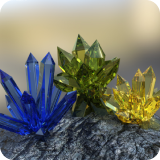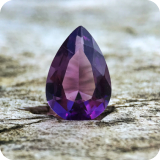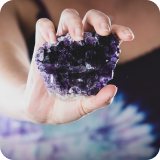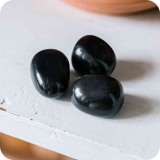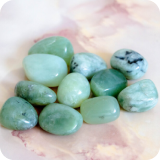- What Does Real Selenite Look Like?
- Types of Selenite
- How To Tell if Selenite Is Real
- How To Spot Fake Selenite
- Real Selenite vs. Fake Selenite
Selenite has a transparent, pearly-white appearance and a unique crystal structure. It is a variety of Gypsum, a soft sulfate mineral composed of calcium sulfate dihydrate. Selenite comes in various forms, including Satin Spar, Desert Rose, and Gypsum Flower, with colors ranging from pure white to peach, green, and even blue hues.
Selenite is one of the most sought-after crystals in the crystal world. Not because of its value or rarity, as it is a common crystal, but because Selenite is a powerful crystal that can cleanse and charge other crystals, objects, and people. For this reason, it’s essential to know the difference between real Selenite and fake imitations.
In this article, we will explore the key characteristics to help you distinguish between genuine Selenite and counterfeits.
What Does Real Selenite Look Like?
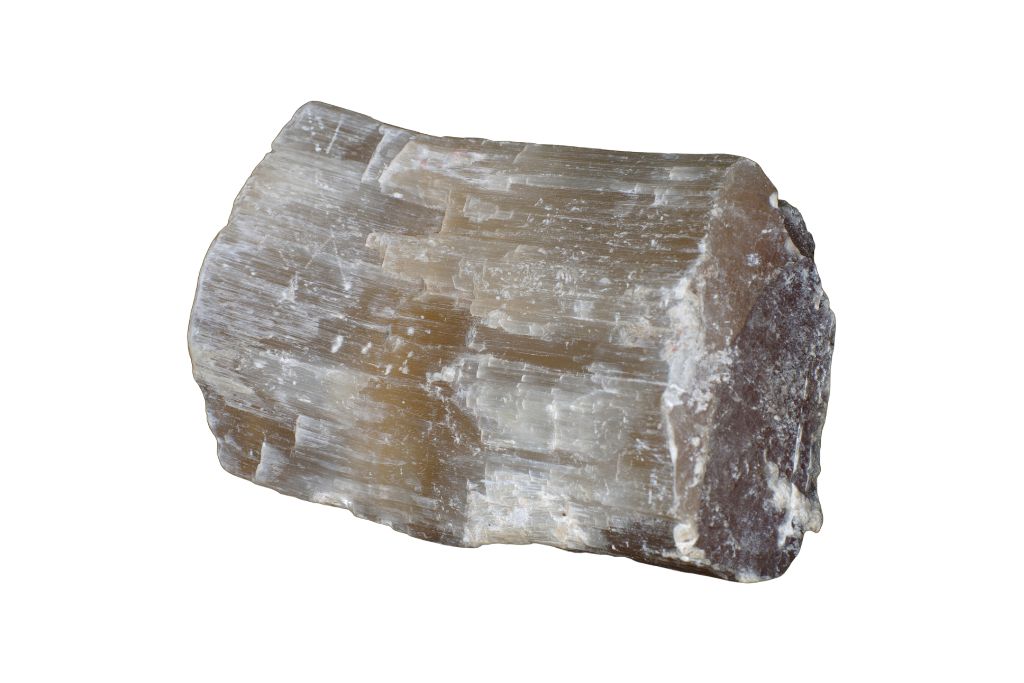
Real Selenite has a translucent or transparent, pearly-white appearance. It also occurs in different colors, such as peach, green, and blue, due to impurities or inclusions in the crystal.
Selenite has a smooth, vitreous (glass-like) luster, and its crystal structure often displays a fibrous, columnar, or tabular form. The edges of the crystal can exhibit a silky or pearly sheen. Selenite is also known for its unique property of displaying a faint glow when exposed to light, known as “chatoyancy.“
Selenite is a soft and fragile mineral with a Mohs hardness of 2. It can be easily scratched or broken, so it requires gentle handling. Due to its water-soluble nature, you should keep it away from moisture.
The most famous deposits of Selenite are found in the Naica Mine in Chihuahua, Mexico, where massive Selenite crystals form in what is known as the “Cave of Crystals.”
Types of Selenite
There are several types of Selenite, each with its own characteristics:
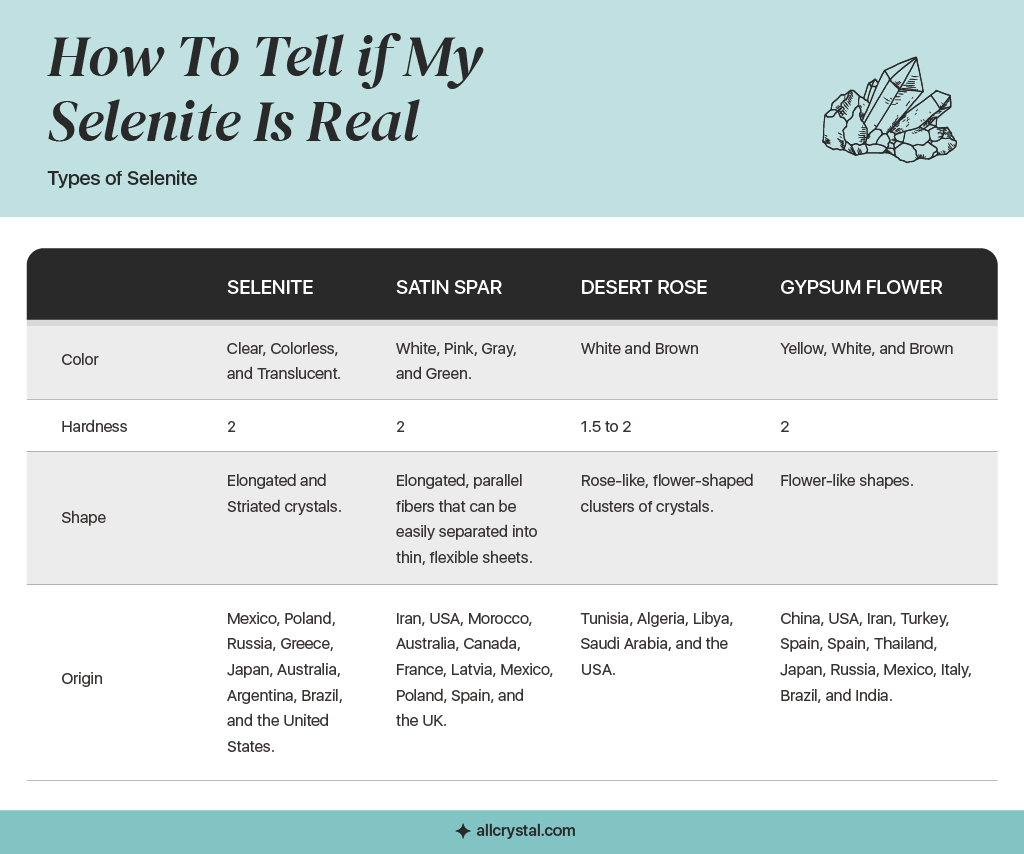
Selenite
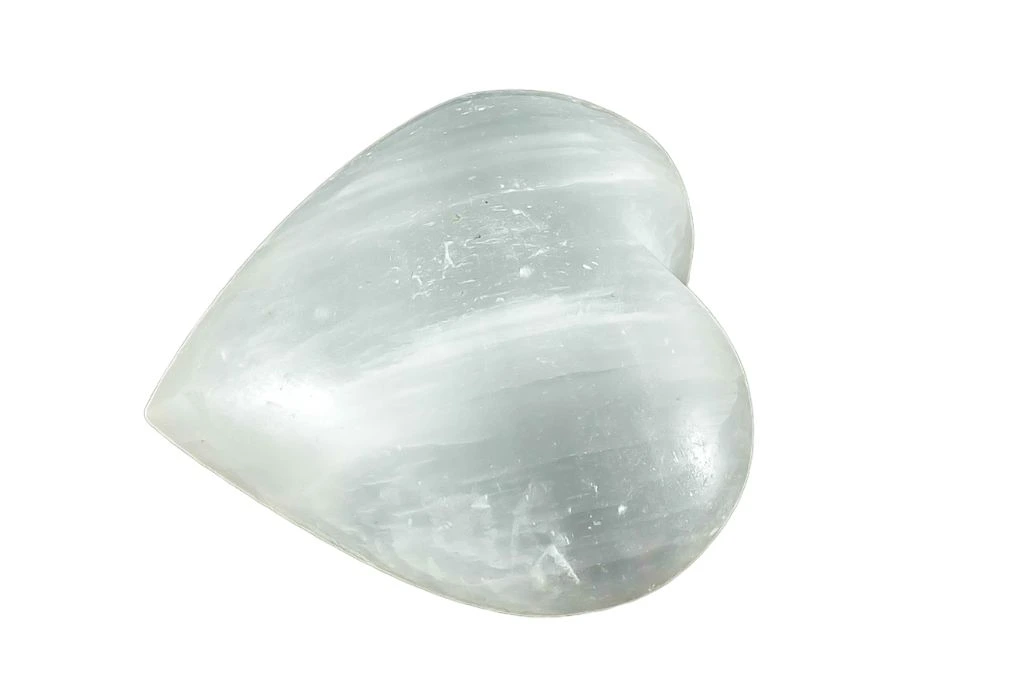
Selenite is found in elongated and striated crystals and is the most commonly occurring variety with a bladed or columnar structure. It is a soft and easily cleaved mineral, which makes it fragile but also allows it to be carved into various shapes, like hearts, lamps, bowls, wands, plates, half moons, and spheres for decorative purposes.
Satin Spar
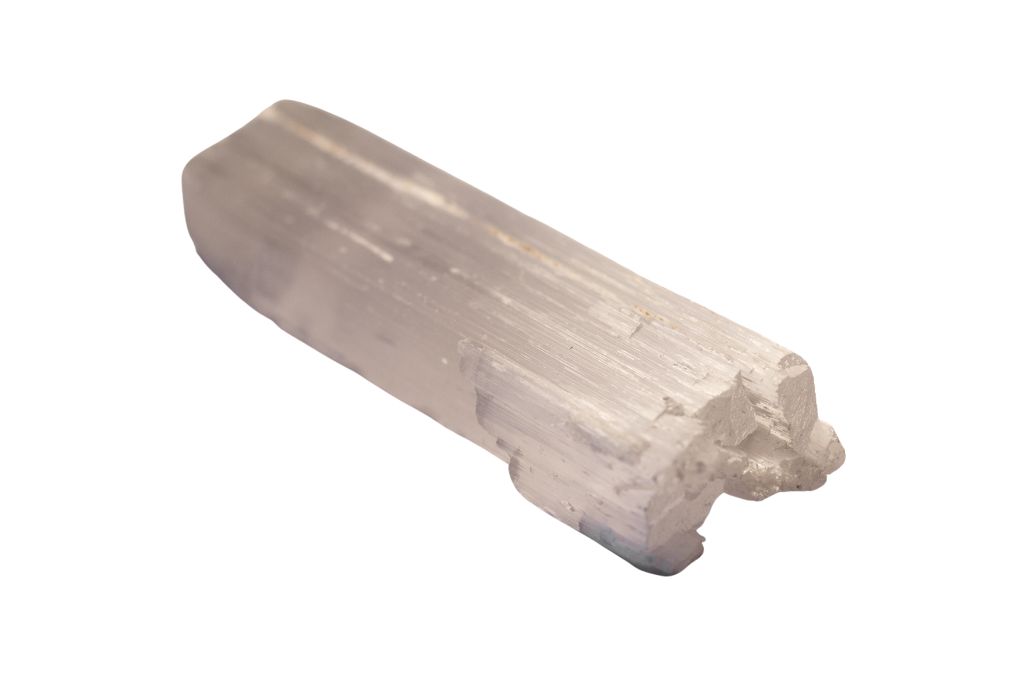
Satin Spar is known for its silky, fibrous appearance and pearly luster. It is white or off-white, though it can also occur in colors like pink, gray, and green. Satin Spar occurs in the form of elongated, parallel fibers that you can easily separate into thin, flexible sheets. Its fibrous structure makes it popular for creating “Selenite wands.”
Desert Rose
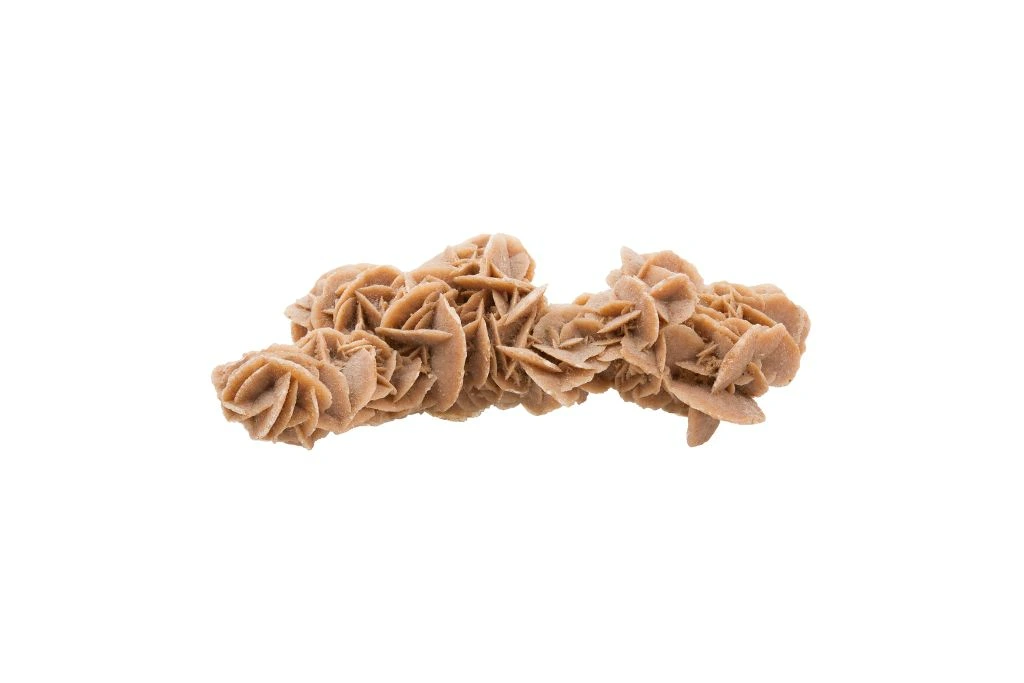
Desert Rose forms in arid environments through the process of evaporation. It has rose-like, flower-shaped clusters of crystals, often exhibiting a sandy, reddish-brown color due to sand particles. Desert Rose formations vary in size from small specimens to large clusters that weigh several pounds.
Gypsum Flower
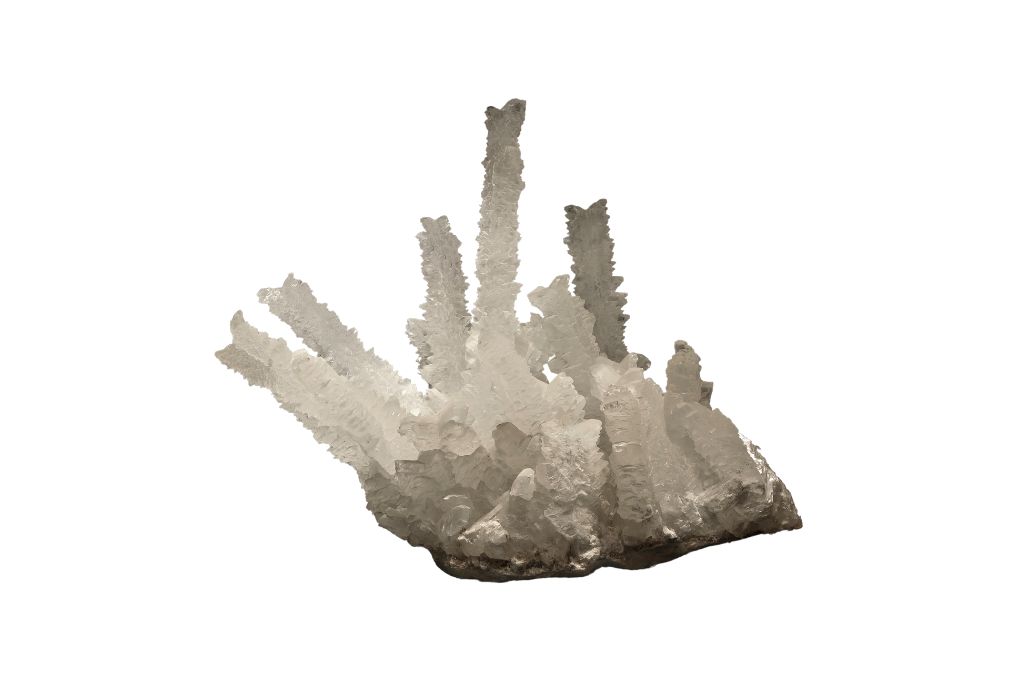
Gypsum Flowers form in unique, flower-like shapes. They are found in caves and other underground environments, developing through the slow evaporation of mineral-rich water. Gypsum Flowers occur in various colors, including white, yellow, and pale brown. They are characterized by their delicate, curved, and branching crystal structures, which give them the appearance of blooming flowers.
How To Tell if Selenite Is Real
You can do several tests to identify genuine Selenite:
Scratch Test
Selenite has a low Mohs hardness score of 2, which means a fingernail or a copper coin can easily scratch it. If these items cannot scratch the specimen, it is likely, not genuine Selenite.
Transparency test
Pure Selenite is often transparent and allows light to pass through it. Hold the specimen against a light source to see if it is translucent. If it is opaque, it might not be genuine Selenite.
Water Solubility Test
Selenite is soluble in water, although the process is slow. Place a small sample of the mineral in water and observe if it starts to dissolve over time. Genuine Selenite will eventually dissolve, while fake specimens will not.
Feel and Texture Test
Selenite has a smooth, glass-like feel and may have a slightly greasy texture due to its low hardness. Fake Selenite might feel rougher or have a different texture. Selenite often breaks, chips, and splinters easily and must be handled carefully.
How To Spot Fake Selenite
Color: Selenite is typically colorless or white, although it may have a slightly yellow or brown tint. If the Selenite you are examining has a different color, it may be fake.
Texture: Selenite has a smooth, glassy texture similar to polished glass. If the surface of the Selenite is rough or pitted, it may be a sign that it is not genuine.
Mohs score: Selenite has a hardness of 2 on the Mohs scale, which means it is very soft and can be easily scratched with a fingernail.
Real Selenite vs. Fake Selenite
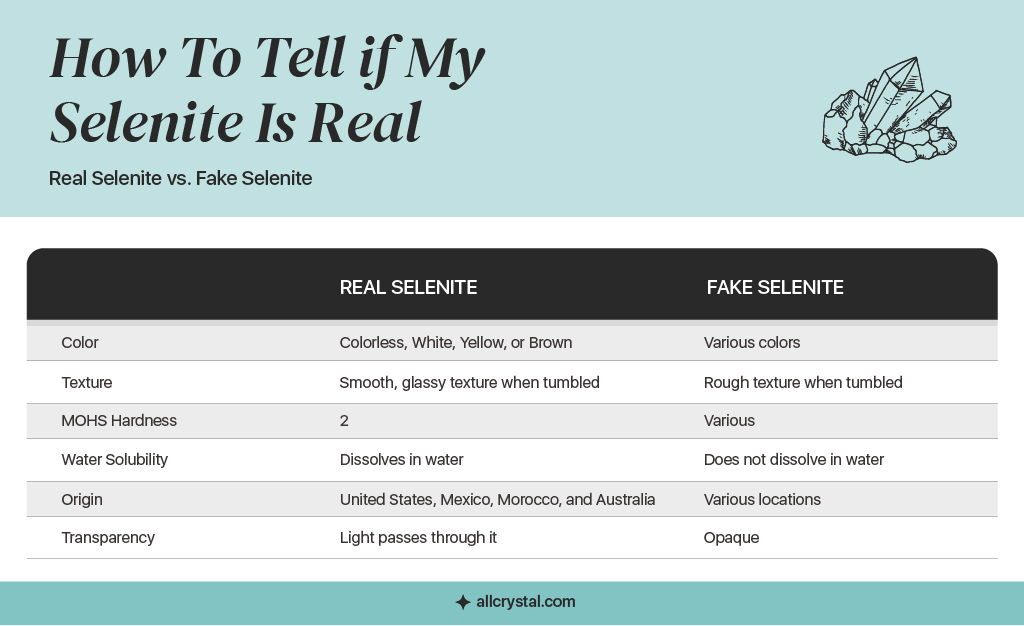
Conclusion
Selenite is a beautiful and delicate mineral, popular for its unique properties and uses. When spotting a fake Selenite, paying attention to its color, texture, properties, and hardness is essential. By being aware of these characteristics, you can make sure you are purchasing a genuine piece of Selenite.


